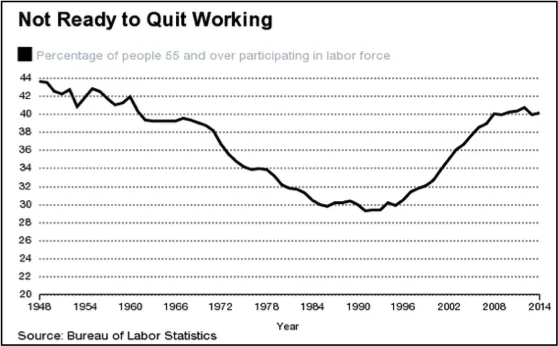Like a fine wine, employees seem to improve with age. According to a recent AARP study, the business case for workers 50+ has strengthened in the last 10 years since the organization published its first findings. Results “confirm that 50+ workers are a critical component of a high-performance business.” That is good news considering how large of a percentage of the U.S. workforce older employees comprise. Two decades ago, people aged 55 and older took up 30 percent of the labor force, but the workforce has aged and that number has swelled to 40 percent today, Bloomberg Businessweek reports.
At the same time, 10,000 Baby Boomers – Americans born between 1946 and 1964 – leave the work force every day and most of them do not have enough saved for retirement. In fact, twenty percent of these people do not have any retirement savings. That is a scary prospect not only for them, but for the impact that could have upon the entire American economic system. That means a large number of Baby Boomers must continue to work. Brookings notes that “keeping older Americans on the job therefore benefits everyone: It is crucial to maintaining economic growth, and it will help the boomers to preserve and increase their savings if longevity continues to rise.”
Still, not everyone is convinced having an older workforce is a good thing for everyone. Critics see an aging workforce as a bad sign for U.S. income growth. As workers get older and reach retirement age, theoretically, they should show a slower rate of increased earning. “The forthcoming re-entry of retiring baby boomers into the workforce will rein in wage growth.” Naysayers believe having an increasingly older American labor force taking a large share of available income will have a chilling effect on the earnings of all workers, including younger cohorts.
Today, U.S. workers aged 65 and higher outnumber teenagers in the workforce for the first time since 1948, CNBC reports. While critics point to retirement concerns and questioning how long older employees will stay with the company as reasons for not hiring candidates 55 and older, AARP asserts this group actually has lower turnover. Furthermore, experience, professionalism, work ethic and knowledge are cited as the advantages these people bring with them to the workforce.
While those intangible qualities are nice to have in employees, studies have found concrete benefits to hiring older workers. Sixty-five percent of workers 55 years and older were found to be engaged compared with 58 percent of younger workers. According to a recent Gallup survey, “organizations with the most engaged workforce had measurably higher productivity and significantly lower rates of absenteeism, employee turnover and safety incidents.” In fact, the 50+ group continues to be the most engaged within the American workforce across all generations. Only a five percent increase in engagement is needed to achieve three percent incremental revenue growth. Perhaps the business case for workers age 50+ shows the value of their experience.

